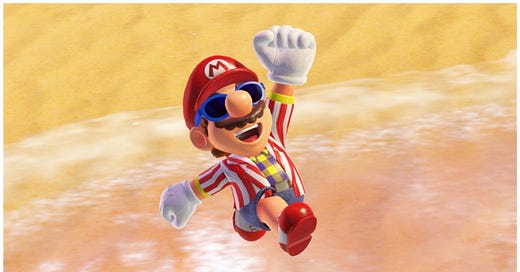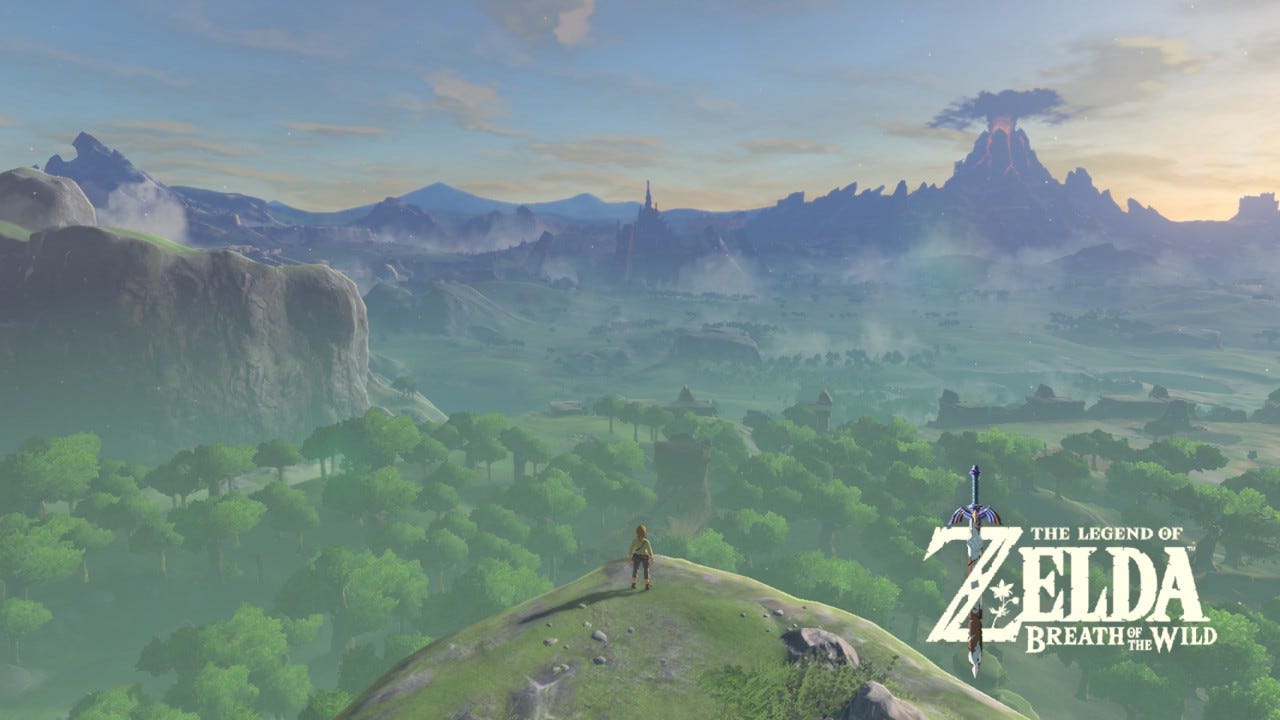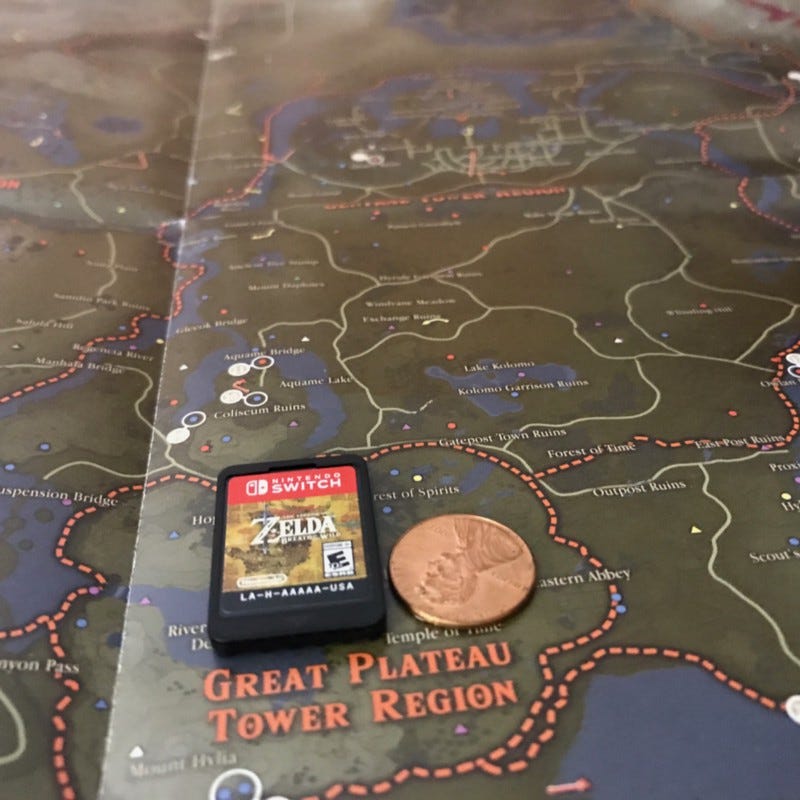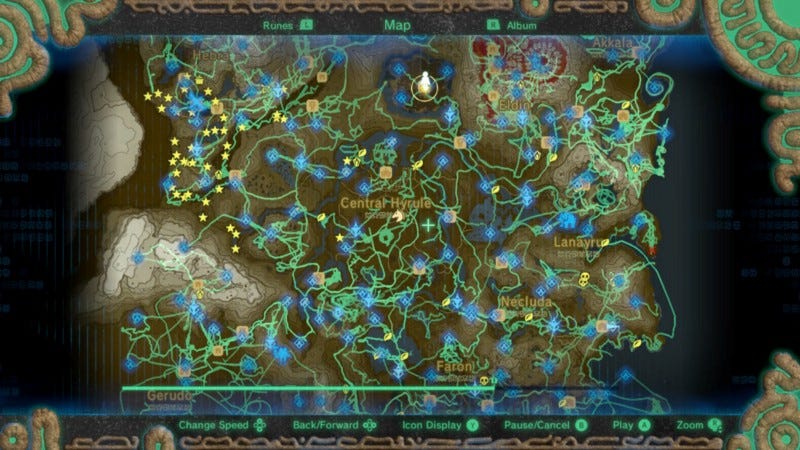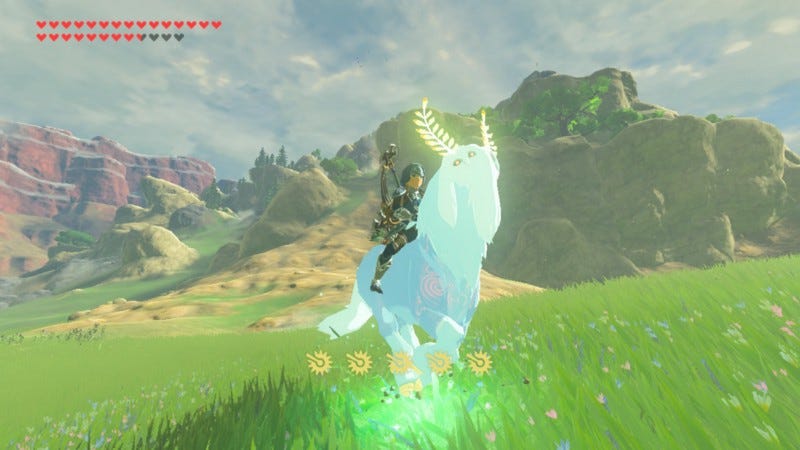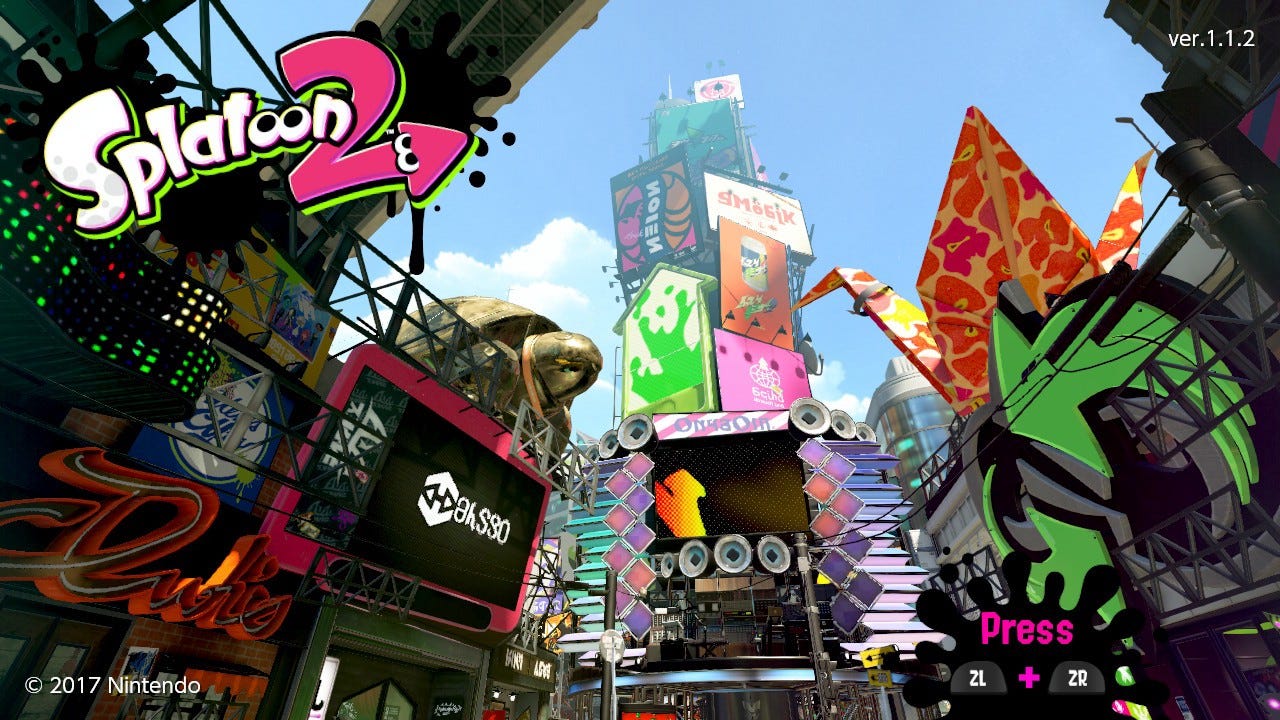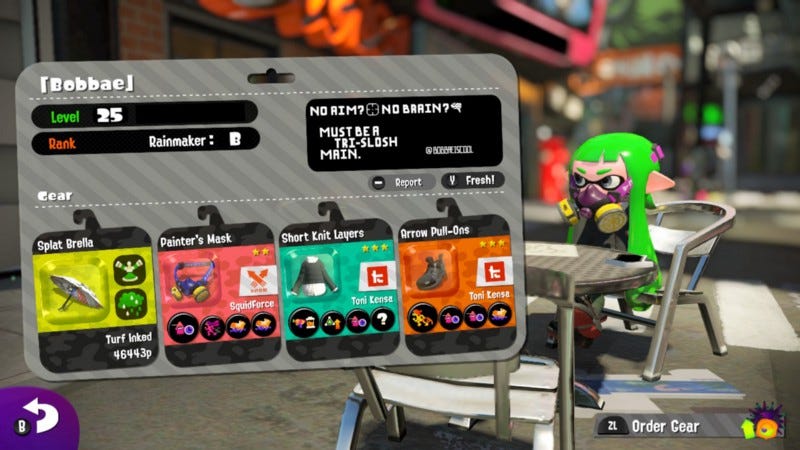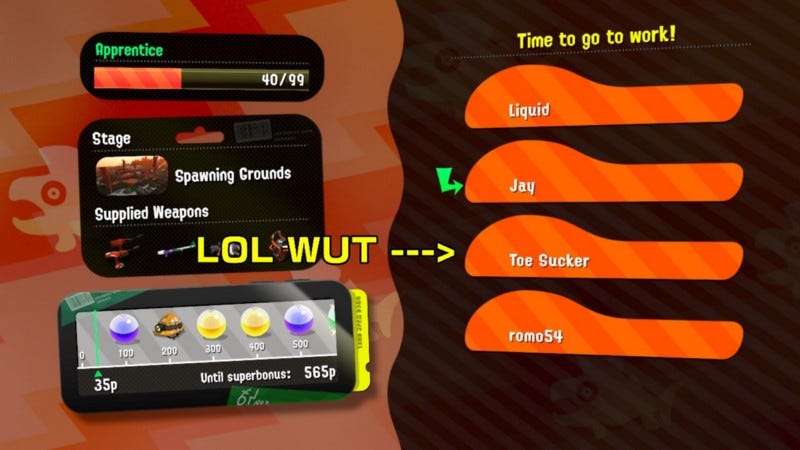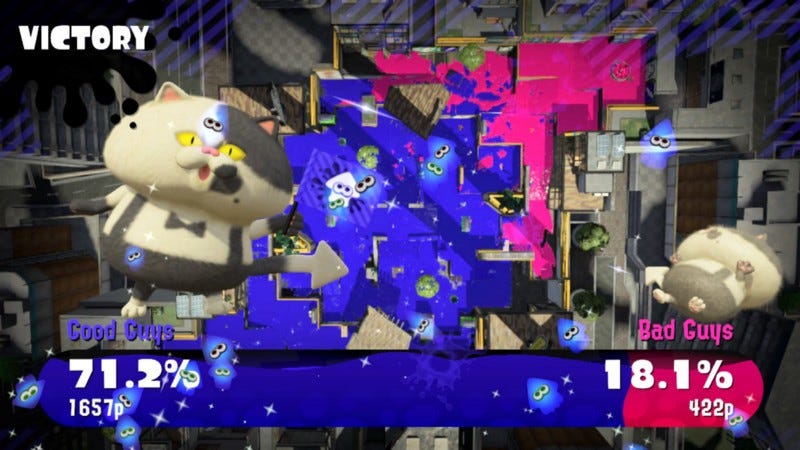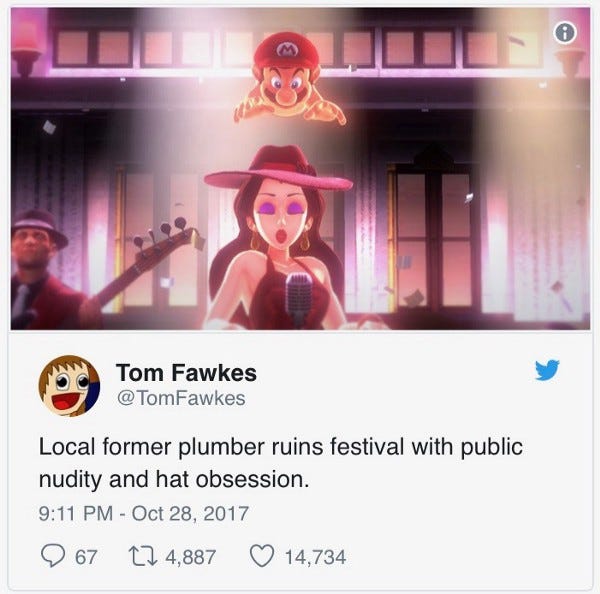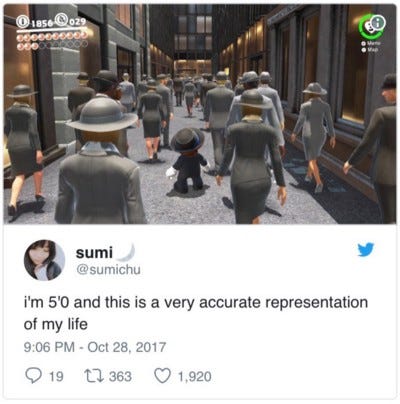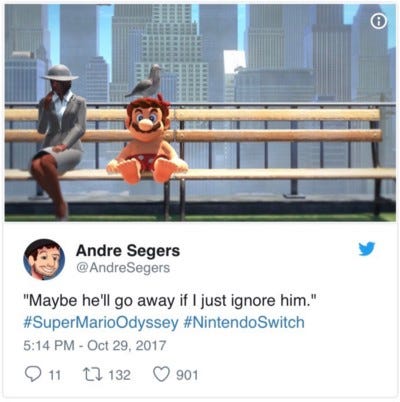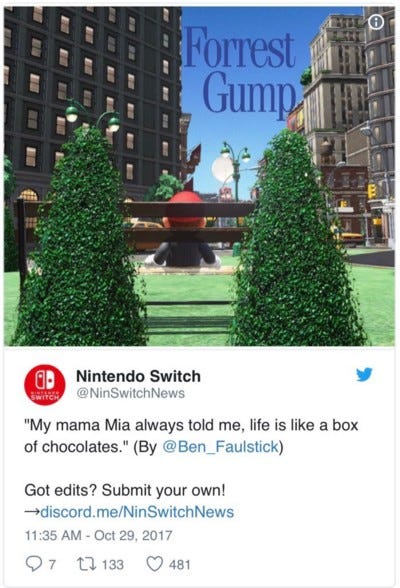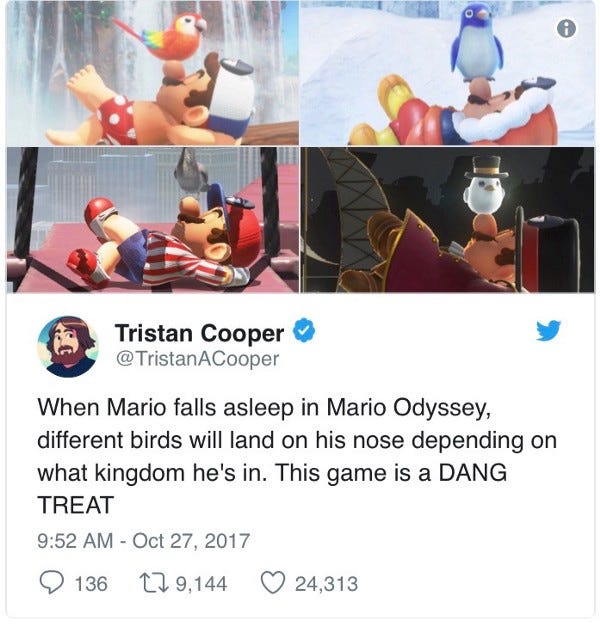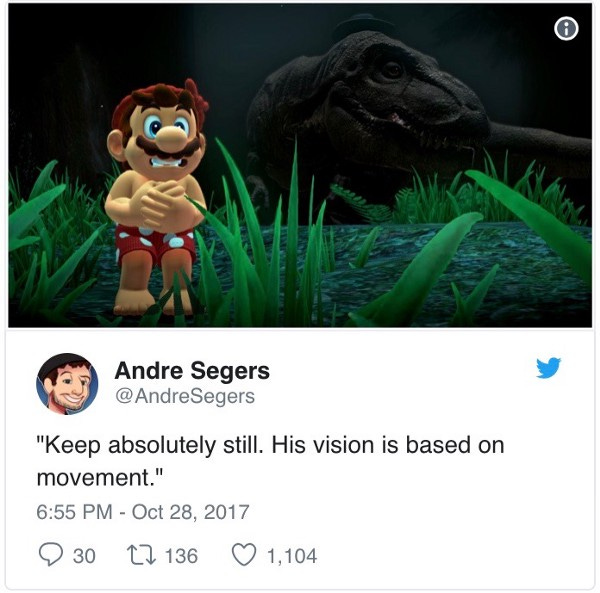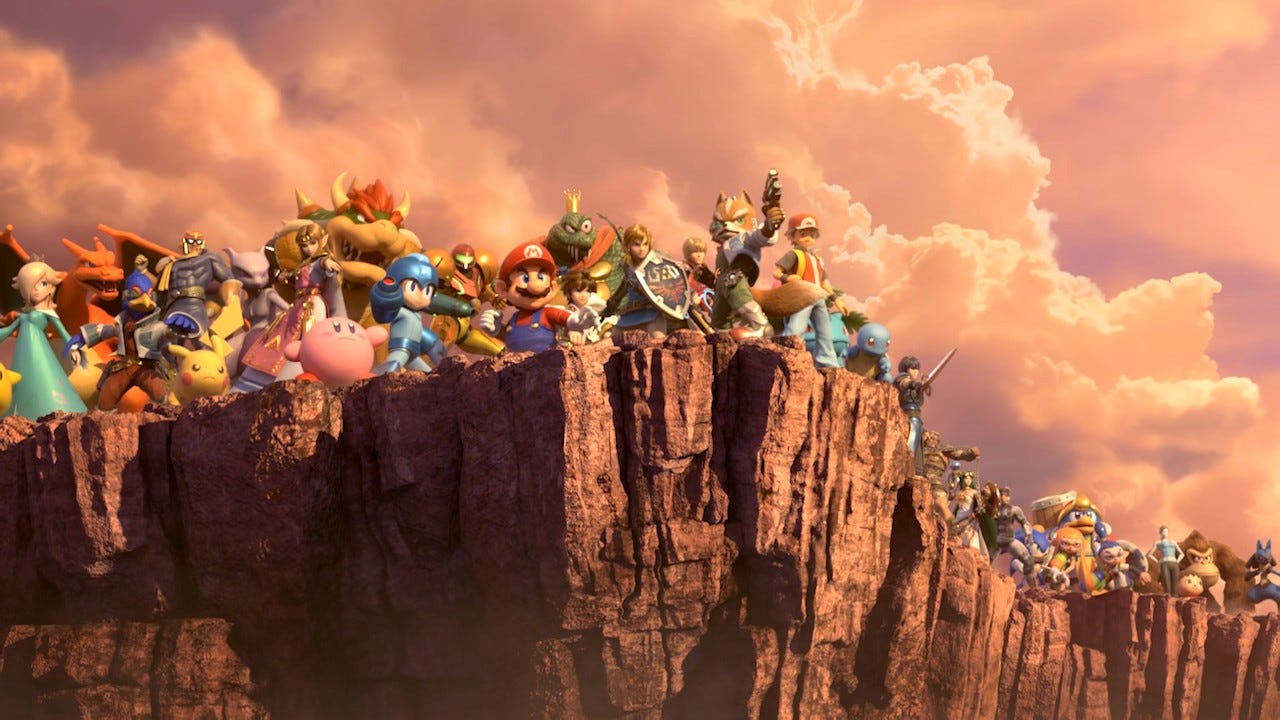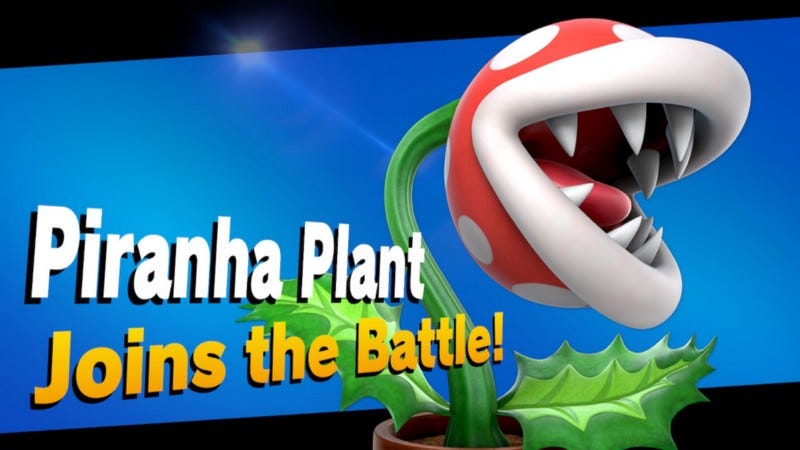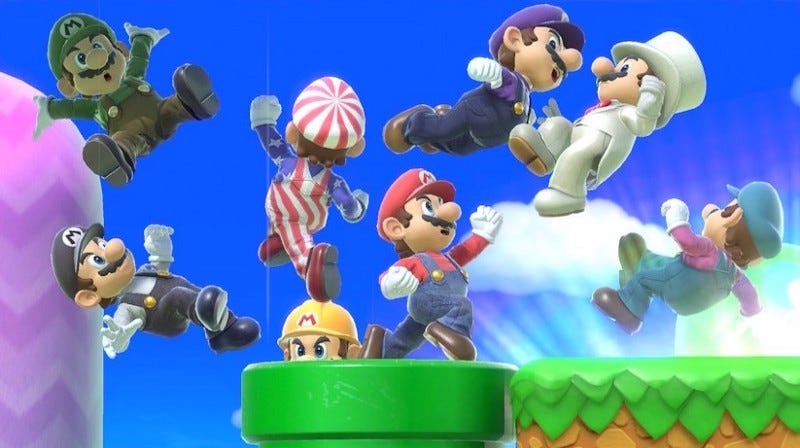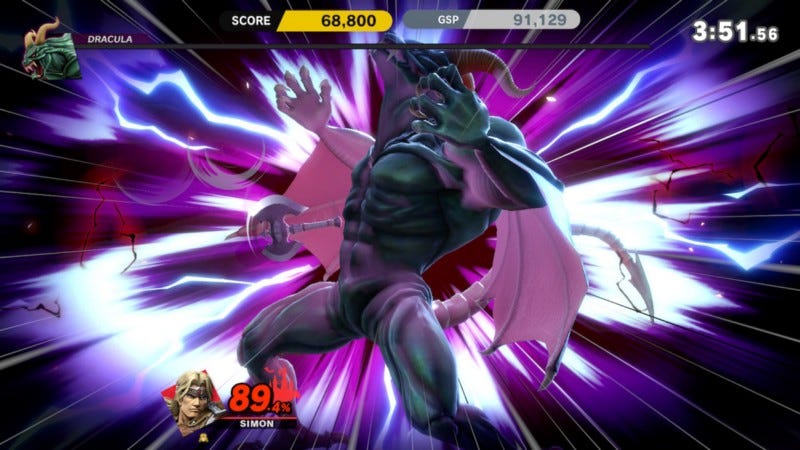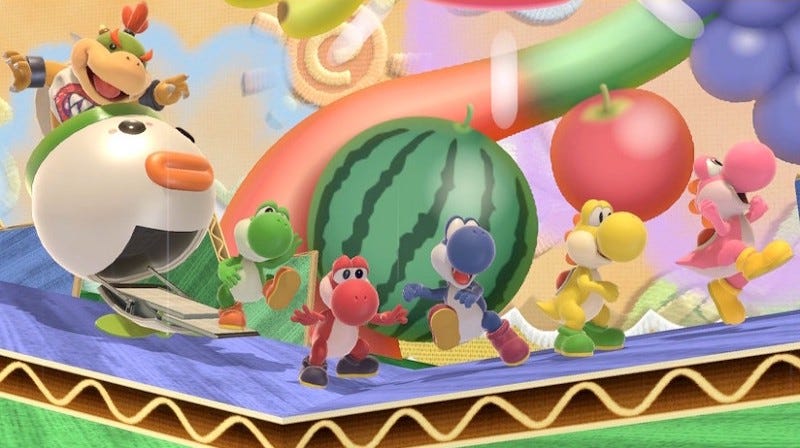🔥Hot Take🔥— The Switch is ushering us into humanity’s next golden era.
Before you hit close that tab, allow me to elaborate.
The Internet is broken.
Not only broken, but also threatening to destroy civilization as we know it.
The good news?
It can be fixed — the Internet, that is (and if we’re lucky, civilization might just be saved with it).
Better yet, the Internet will be fixed.
And here’s the kicker:
It won’t be Google or Facebook or Twitter that steps up to the plate and sets things right.
No, our savior — our true savior — sports a red cap, a pair of blue suspenders, and a bushy mustache.
His primary mode of transportation? A goofy-looking green dinosaur that eats fruit and spits fire.
That’s right, Mario will save the Internet.
Not just Mario but all his comrades too: Yoshi, Princess Zelda, Donkey Kong, Fox McCloud, and all the others who inhabit the magical universes that Nintendo has created over the years.
Nintendo, perhaps the world’s most beloved videogame company, is going to save the Internet.
Sound crazy? It’s not.
Time and time again, Nintendo has proven that it’s up to the task of solving seemingly insurmountable problems.
(Nintendo fans know a thing or two about impossible-to-solve tasks: just ask them about the Water Temple in Ocarina of Time…)

Furthermore, I’m convinced that Nintendo has been planning to fix the Internet since (at least) the release of the Switch console nearly two years ago.
Still don’t believe me?
Examine the evidence for yourself and watch as everything starts to come together!
WARNING: The following post contains minor gameplay spoilers for Breath of the Wild, Super Mario Odyssey, and Super Smash Bros: Ultimate. Nothing major, but if you’re the type who avoids screenshots and gameplay videos before playing a game, then 1) play the damn games already — seriously, they’re amazing — or 2) tread carefully!
Exhibit A: Breath of the Wild dazzles the entire world
Thousands of years ago, human beings discovered fire.
Sometime later, math and science were created.
Later still, two World Wars were fought.
The Berlin Wall fell in 1989.
Then, on March 3, 2017, something truly remarkable happened, forever altering the course of history.
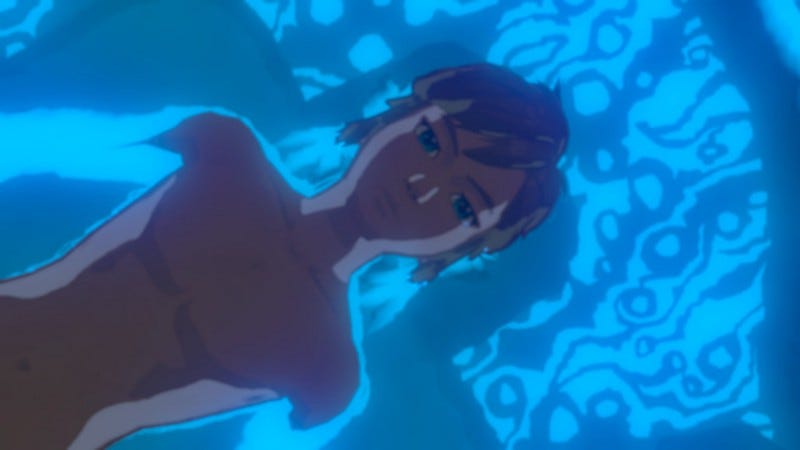
The Nintendo Switch and its marquee launch title, The Legend of Zelda: Breath of the Wild, dropped on the gaming scene harder than that asteroid that took out the dinosaurs.
Though teased and telegraphed for years, nobody expected — nor could anyone have predicted — the sheer cultural magnitude of Breath of the Wild’s launch.
The world hasn’t been the same since.
Breath of the Wild launched to near-universal acclaim, with even non-gamers knowing that a new Zelda game — massively open-ended and beautifully designed — had been released.
Two years later, the game continues to entrance players who, even now, are still discovering new ways to play (and break) the game.
It might be hard for non-gamers to truly comprehend just how big of a deal this game was at the time (and still is today).
If you’re a non-gamer, think back to the first time you encountered Star Wars, Batman, Lord of the Rings, or Harry Potter.
Remember those sensations of pure awe, excitement, and other-worldliness?
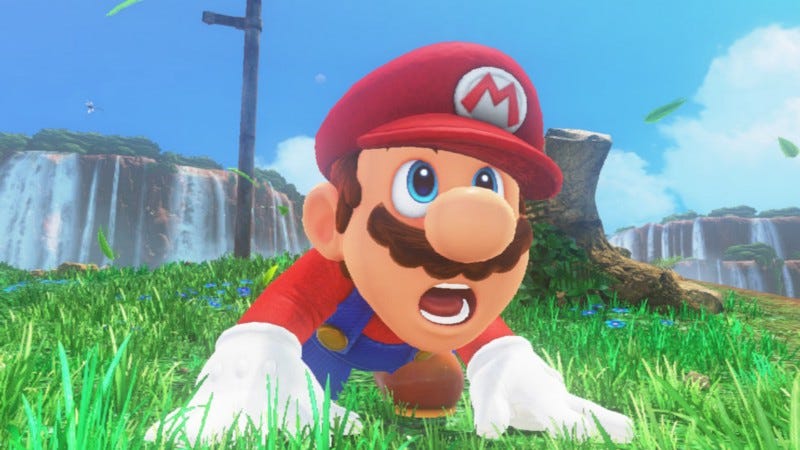
That’s how it felt to play Breath of the Wild for the first time.
And something remarkable took place as soon as the game was released.
In an instant, all those people who bought the game — and millions did — found themselves confronted with the same daunting yet spellbinding reality:
The invitation to begin exploring an unimaginably vast and jaw-droppingly gorgeous open world full of epic quests and adventures.
Because it was such an enormous world, one that (at the time) nobody had yet come close to fully traversing, players had no choice but to find their own ways through this expansive landscape.
No online guides, no Let’s Plays on YouTube — nothing to help you beat the game faster than your friends.
(So far I’ve logged 250+ hours in Breath of the Wild, and I’m nowhere near attaining 100% completion. And I am by no means the only one in this position.)
So, what did we all do?
We figured things out, together.
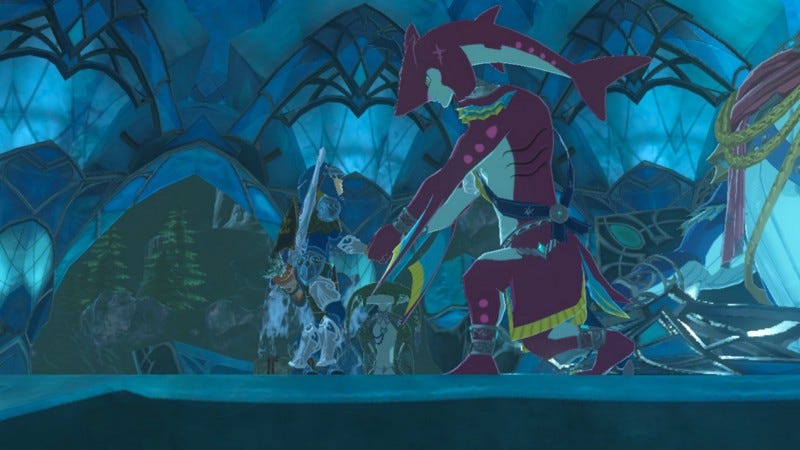
During my first play-through of Breath of the Wild, I regularly checked in with four others who were also making their ways through Hyrule:
A colleague, one of my students, my daughter’s respiratory therapist, and the ever-so-helpful guy behind the counter at my local GameStop.
We had fanboy-ed and fangirl-ed out, drooling over the teaser trailers and the hype-bait in the (many!) months before launch.
Finally, the game launched, and the four of us faced the same quest: find the lovely Princess Zelda, defeat the evil Ganon, and save the mythical land of Hyrule.
And yet, the nature of the game was such that we all had vastly different experiences: had you not known otherwise, you wouldn’t have thought we were even playing the same game!
We would exchange stories about places we’d been, things we’d seen, and monsters we’d slain.
We’d regale each other with tales of serendipitous accidents and surprising discoveries that unlocked whole new possibilities for us (“I accidentally shot a fire arrow into the bramble hedge, burning it away and clearing a path!”).
We’d drop our jaws over the stunning sunsets we’d see after scaling the tallest peaks of Hyrule (and marvel just as much at the fact that Link can climb anything — ANYTHING!).
And we’d help each other out, time and again.
If somebody figured out how to complete a quest that was causing me trouble, he or she would tell me how the puzzle was solved, and vice versa.
Each of our efforts to help the others conquer the game stemmed not only from the camaraderie associated with participating in a cultural watershed moment, but also the experience of bonding with other people as you work together to complete a challenging yet epically rewarding task.
Combine these dynamics with the wonder associated with exploring a world unlike any other presented in a videogame before, and you arrive at the essence of our experience: pure magic!
Here’s the truly amazing thing about all this:
The exact same type of camaraderie and collective pursuit was taking place online!
On Internet gaming forums and social media sites like Reddit, Twitter, and YouTube, Breath of the Wild fanatics gathered to share screenshots, recipes, battle strategies, and fan theories.
People boasted about having taken down bosses without suffering any damage during the bouts.
Others wrote about how deeply inspired they felt by the beauty of the game and the creativity of its developers.
People would cheer each other on — not as sarcastic trolls, but with sincerity and genuine enthusiasm.
A supportive and empathic community began developing, one in which players felt comfortable sharing real thoughts and feelings about the various ways in which Breath of the Wild helped them cope with trauma, death, and other elements of the human experience.
(This was certainly the case for me: my daughter was hospitalized during most of my first play-through — honestly, Breath of the Wild’s meditative immersion saved my sanity during those trying times.)
So, the next time you read about trolls on Reddit harassing people and engaging in all sorts of incendiary tomfoolery, remember: Nintendo did the impossible by “bleaching the cesspool” and turning social media into a communal force for good.
Breath of the Wild wasn’t, however, Nintendo’s only successful conquering of the Internet for the forces of righteousness — not even for that year!
Exhibit B: Splatoon 2 shows the world just how powerful non-toxic fandom can be
As social media sites like Facebook and Twitter struggle to reduce harassment, misinformation, and negativity on their platforms, Nintendo has long since shown that it knows exactly how to defeat trolls and two-bit — or are they 8-bit? — edgelords.
No group of enthusiasts illustrates this better than Splatoon fans.
If Donkey Kong, Mario, and Zelda are Nintendo’s OGs (original (videogame) gangsters), then Splatoon’s inklings are the hip, new squid-kids on the block.
The company’s newest IP is bold, brash, edgy, and sassy.
And as Nintendo’s history of turning the videogame industry on its head would have predicted, the company figured out how to make a non-violent shooter really fun to play.
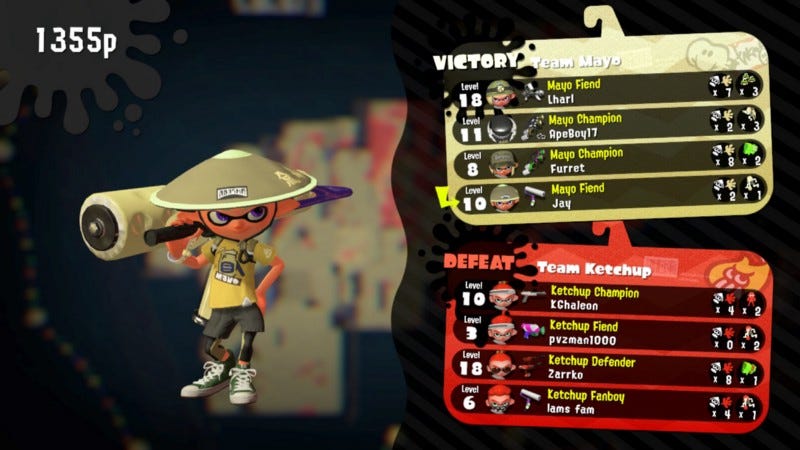
The Splatoon series continues Nintendo’s time-honored tradition of creating kid-and-family-friendly products.
Given that Nintendo sought to develop the Splatoon games as multiplayer experiences (at least primarily), this was no easy feat to accomplish.
The company had to strike a sufficient balance between two potentially competing dynamics: make the Splatoon games as fun and as safe to play with strangers (other online gamers) as possible.
No doubt a tall order, especially considering that online gaming is often a noxious hive of 14-year-olds spewing profanity and racial slurs at each other (much like Facebook and Twitter at times…).
All the same, Nintendo made it happen.
To be sure, Splatoon is unlike other online multiplayer games in several key ways.
First, only people who own the game can participate in online play; this serves to severely cap the Splatoon user base (especially when compared to the hundreds of millions, if not billions, of people interacting with each other via today’s leading social media sites).
This is true for both the original Splatoon, forever tied to the ill-fated Wii U, and for the Switch’s Splatoon 2.
Second, in the lobby — the virtual area where players hang out in between matches — players can communicate with each other using hand-drawn doodles… and nothing else!
Well, technically, players can choose from various pre-written messages — but this is a far cry from other games, which give players the ability to type out their own messages.
Yes, people can and do express themselves by doodling their preferred written messages, as a kind of censorship workaround.
However, most doodles are not the crass or offensive type you might expect.
They’re often hilariously funny.
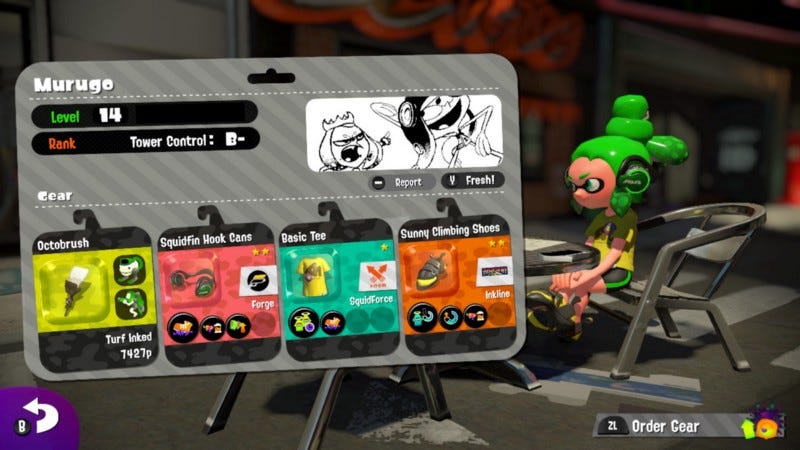
Sometimes they’re plain bizarre and unintelligible (which, of course, is what the Internet has become known for).
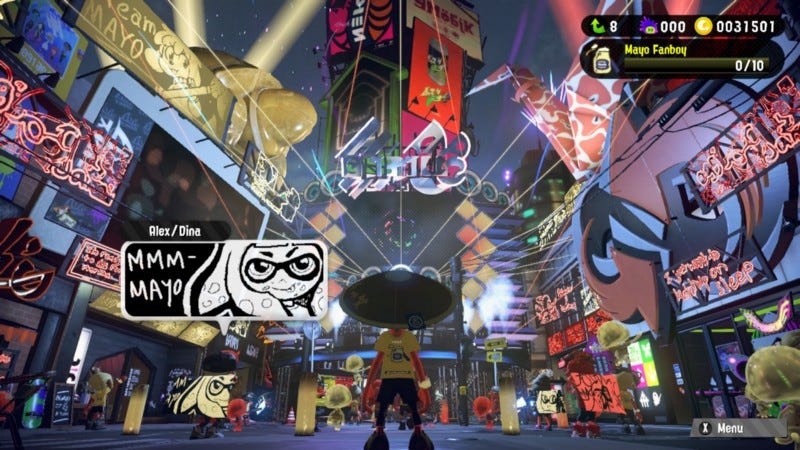
Typically, doodles are civil, even the requisite trash-talky ones — unless somebody is on a mission to expose a cheater, but I think we can all get behind that…
All that said, the uglier side of the Internet does sometimes leak into Splatoon, usually in the form of shitposts.
For example, last year some players engaged in a back-and-forth doodle flame war after somebody posted a disrespectful doodle insulting transgendered people.
However, something extraordinary happened quickly after that:
A flood of positive doodles expressing solidarity with the LGBT+ community took over the lobby, pushing out all the trolls who were clearly no longer welcome there.
And then, everyone got right back to splatting each other with inky super soakers.
This is a case where the good guys (and gals and non-binary folks) won!
Can you think of a situation in which people on Facebook or Twitter or another massive social media platform came together to successfully take a stand against hatred and bigotry?
Nintendo continues to struggle with certain aspects of online gaming (*ahem* voice chat), but it absolutely nailed the Splat Charger headshot here.
Jack Dorsey and Mark Zuckerberg might want to take some notes…
To be clear, the amazing display of love and support shown by Splatoon fans to the LGBT+ community has as much (if not more) to do with the fans themselves as it does with Splatoon’s doodle-based communications framework.
Nevertheless, Nintendo was able to use a game featuring squid-people who squirt each other with neon ink pistols to create a space in which tolerance and diversity could flourish.
When is the last time you heard somebody accurately characterize Facebook (or, dare I say, 4chan) like that?
Exhibit C: Super Mario Odyssey manages to make Twitter a pleasant place to visit (gasp!)
As well recognized as Zelda is, Mario continues to be the Nintendo property with the most crossover appeal.
There’s virtually nobody who grew up during the '80s or '90s (or raised their kids during those periods) who doesn’t recognize Mario, Princess Peach, and Bowser when they seem them.
(Want a quick demonstration? Compare how many people quickly yet wrongly identify Link as Zelda vs. how many successfully start singing along with you when you hum the first few bars of the iconic Super Mario Bros. theme song.)
It was, therefore, a big flipping deal when in late 2017 Nintendo released Super Mario Odyssey, Mario’s biggest and boldest adventure yet.
In doing so, Nintendo unleashed a tidal wave of nostalgia onto the world, sweeping us all up into a rose-colored bender that pureed us together like nothing else before it.
It’s the closest we’ve ever come to genuine world peace.
For when all those '80s and ‘90s kids finally got a chance to play that one part in New Donk City where an 8-bit Mario recreates the original Donkey Kong as fireworks blast off around him and the sound of Pauline’s superb (and ridiculously catchy) ode to our favorite plumber’s storied 30-year career plays…well, they all went onto Twitter and unleashed a Mario love fest the likes of which we’ve never seen before.
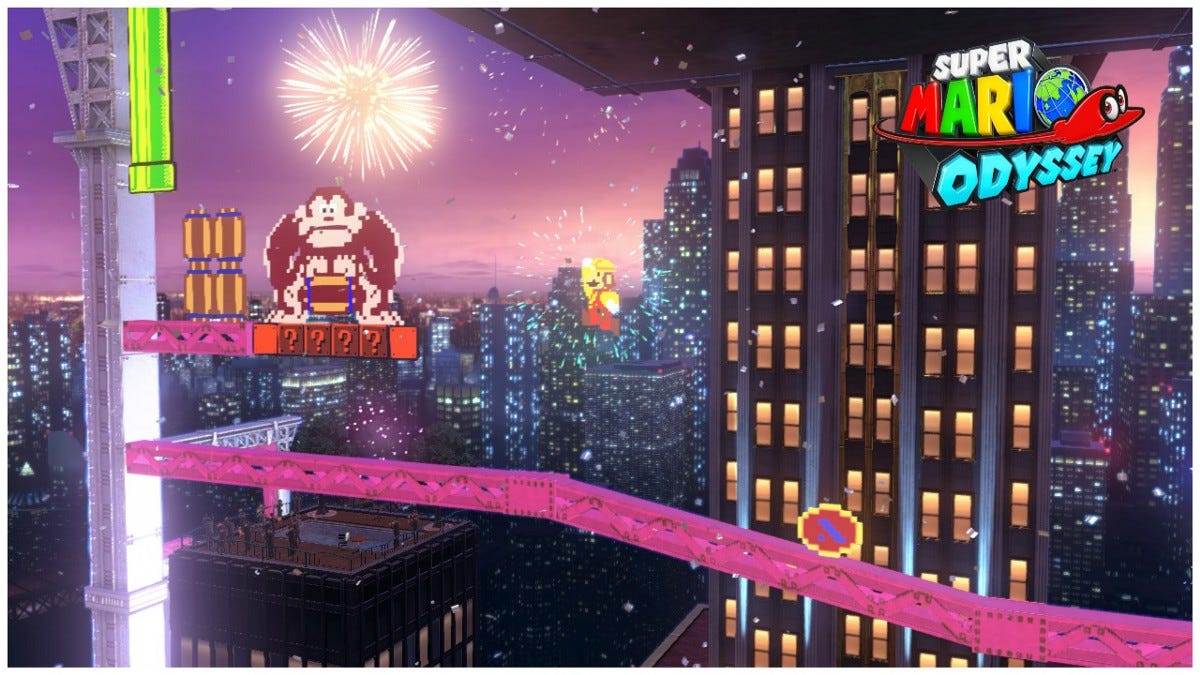
People laid down their digital arms, forgot their differences, and celebrated the untarnished joy and intrigue that Nintendo managed to rekindle with Super Mario Odyssey.
People shared screenshot after screenshot and meme after meme, re-experiencing their cherished childhood memories again and again in real time.
They laughed. They cried. They tweeted and retweeted.
And they did it over and over again for months — which, on the Internet, is basically an eternity.
Once again, Nintendo had accomplished the impossible: it had transformed Twitter into a decent and even pleasant universe, a place to visit for reasons of positivity and happiness rather than trolling and fear mongering!
Some — such as I — might even say it was a burst of collective ecstasy, unlike anything the world has witnessed before.
It was as if your favorite team had won the Super Bowl, or your home country had won the World Cup — only the WHOLE WORLD was celebrating along with you, and kept going for months!
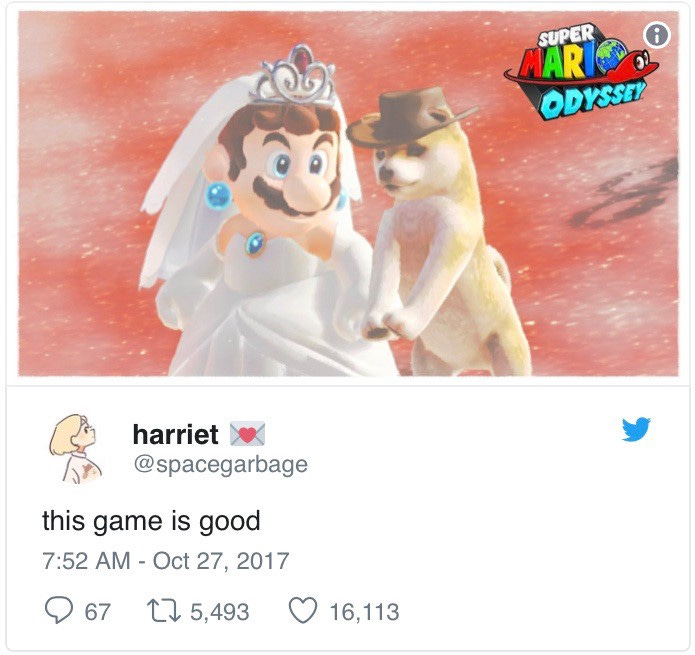
Of course, like all good things, the Mario love fest fuelled by collective nostalgia wasn’t bound to last.
As people began to complete Odyssey and move on to other games, the rapture died down, and Twitter regressed to its normal state — that of harassment and flame-baiting central.
In a way, it was like the famous Christmas truce in World War 1, where British and German soldiers emerged from the trenches bearing white flags, played friendly soccer matches, and swapped tales, tea, and cigarettes…before then heading back into the trenches and slaughtering each other the next day.
Yes, it’s incredibly sad that it ended.
But the fact that it happened at all is magical, even miraculous, and it bodes well for us as a species.
Perhaps we’re not so irredeemably rotten by nature, after all.
Leave it to a jolly, plump, Italian plumber and his magic hat to show us the way and the light!
Exhibit D: Super Smash Bros. Ultimate provides the “ultimate” nostalgic catharsis
A few months before the Switch’s second anniversary, Nintendo released Super Smash Bros. Ultimate in December 2018.
In many ways, Nintendo saved the best for later — not last, because I doubt this will be the end of the company’s on-going triumphs.
There’s a popular, if scientifically dubious, theory amongst many gamers that video games prevent violence by providing people with an opportunity to express their violent tendencies in non-violent ways (i.e., within virtual worlds).
In reality, the research is mixed regarding this theory’s veracity: the likeliest explanation is that video games don’t have any significant effect on people’s willingness to engage in real-world violence, one way or another.
Nevertheless, and as any gamer will tell you, there are few things quite as satisfying as blowing off steam by kicking the living crap out of random strangers’ digital avatars.
And when said avatars take the forms of Mario, Link, Samus, or any of the other dozens of iconic Nintendo characters from the past four decades, it cranks the Awesome-Meter to infinity +1.
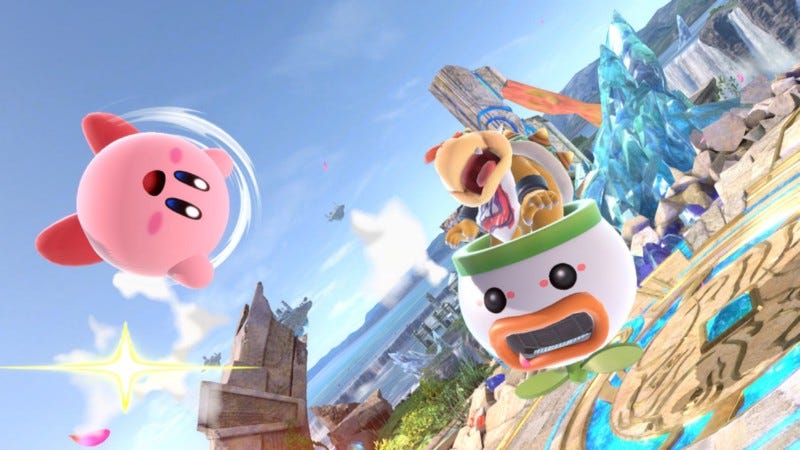
2017 was such an improbable and phenomenally successful year for Nintendo that gamers and critics alike were skeptical that the Big N could do it again in 2018.
However, not only has the Switch shown no sign of slowing down, but Nintendo has elected to cap its sophomore year in the most spectacular way possible:
An all-encompassing celebration of gaming’s rich history, and a living museum dedicated to Nintendo’s lauded pantheon of beloved characters — along with a few guests from Sega, Capcom, Square, and other gaming giants.
A museum where said characters pummel each other to a (non-bloody) pulp, over and over again.
It’s pretty freaking awesome.
I’m talking, of course, about the legendary Super Smash Bros franchise.
In following with Nintendo’s M.O. these past few years, the Switch’s iteration of the game, Super Smash Bros. Ultimate, is the biggest, baddest, and most bad-ass version in the series yet.
Super Smash Bros. Ultimate contains every fighter, (almost) every stage, and (almost) everything that’s ever appeared in the series, and then some!
So, what did the nearly 20 million Switch users across the planet do the day it came out?
(Besides asking “Where is Waluigi?!”, of course?)
They kicked a lot of ass… but not each other’s.
Gamers’ endless playing overloaded Nintendo’s servers: lag, unstable connections, and poor matchmaking occurred as a result.
But then Lord Sakurai used some of his Nintendo magic to patch the game, and the issues got (mostly) smashed away (pun most definitely intended, #sorrynotsorry).
After that, people finally started to let loose by beating the living pixels out of random strangers on the Internet, something they continue to delight in doing to this day.
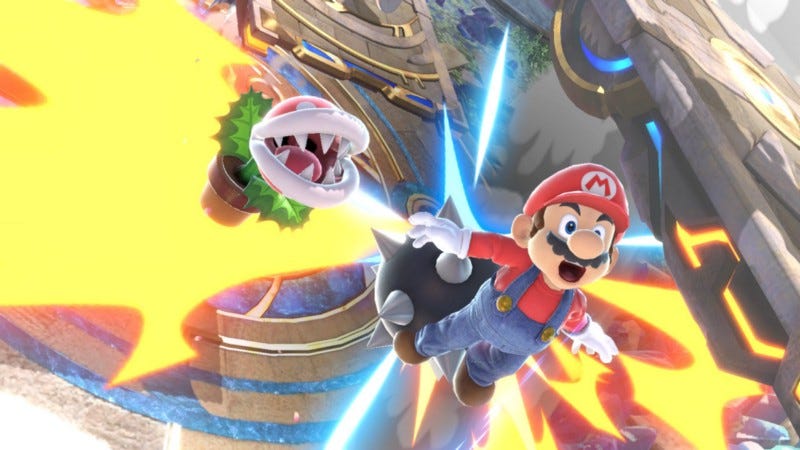
Nintendo has, once again, united the Internet in a giant, worldwide binge of heart-stopping brawls and OD-level nostalgia that shows no signs of letting up.
On Twitter, Reddit, and YouTube people are sharing clips and GIFs of epic beatdowns, dream matchups, awesome fan art, wild fan theories and debates, future patch and DLC predictions, and Waluigi memes with each other.
One can’t help but wonder how many of these folks would otherwise be hurling insults at each other on YouTube, or on some other social media platform, were it not for the joy and excitement Super Smash Bros. Ultimate has brought into millions of Switch users’ lives.
Oh, and you thought we were done with nostalgia? You ain’t seen nothing yet.
Remember how freaking awesome it was when Ganondorf turned into Ganon in Ocarina of Time?
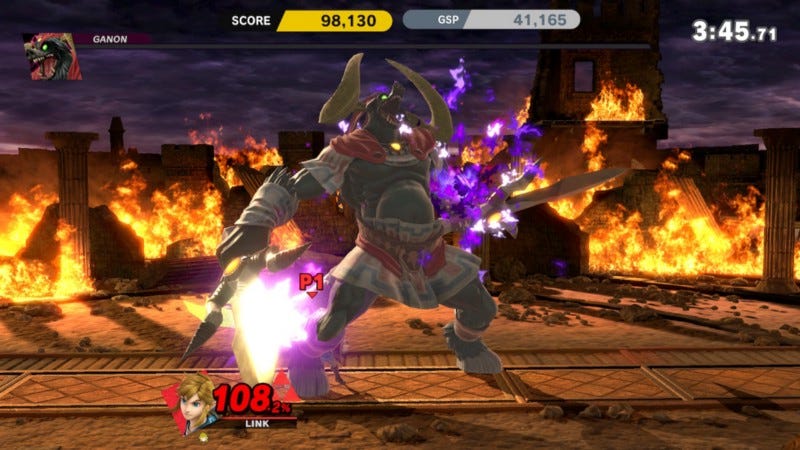
Or the rage you felt as you threw your NES controller at Dracula in Castlevania?
Or how about the chills when Marx first sucked Kirby into that black hole?
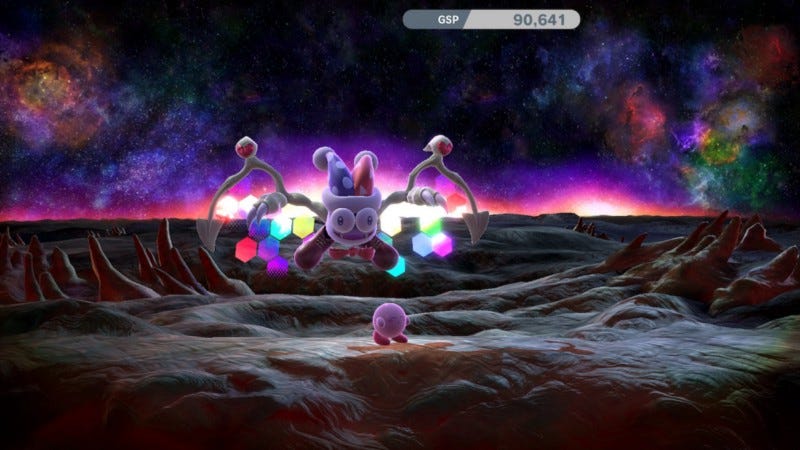
Well, guess what?
You can re-experience all that in Ultimate!
If Super Mario Odyssey was nostalgia crack, then Super Smash Bros. Ultimate is a concentrated and uncut nostalgia speedball.
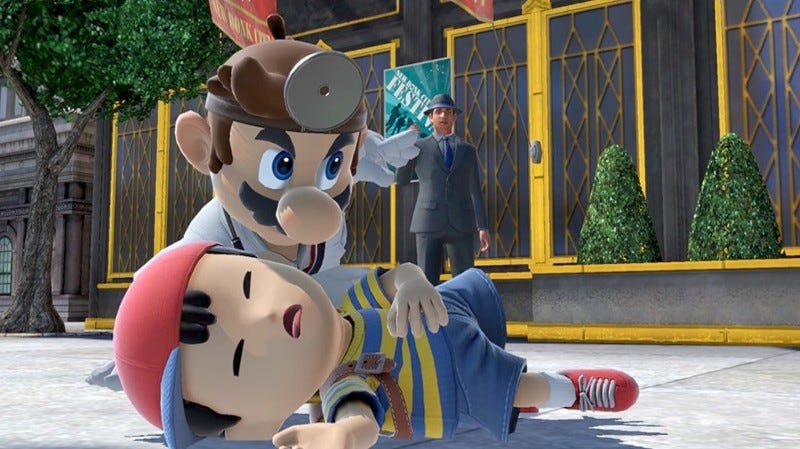
Online communities continue to thrive, watching and waiting as Ultimate’s meta grows, shifts, and crystallizes, surprising and delighting both casual and competitive players alike.
All this adds up to Nintendo, yet again, effectively bringing together large swaths of the Internet for good — even if that good ultimately derives from the desire to bash cartoon-like characters into oblivion.
In fact, Ultimate’s single-player “World of Light” mode is the perfect metaphor for our troubled times:
Galeem (the Internet) is scorching our heroes (humanity) away with an inescapable, searing, all-consuming beam of light (shitposts, fake news, trollz).
It is up to Kirby (an avatar for the entire Smash roster, which is itself a manifestation of Nintendo), the last man (or last puff?) standing, to defeat Galeem and save our future.
I won’t spoil the ending for you, but if our own story follows a similar path, the future is very bright indeed!
(Spoiler alert: Kirby and the gang prevail. Ok, I lied. What?! Don’t act so surprised! When do the heroes ever lose in a Nintendo game? Besides that one time, that is…)
I realize it’s hard to be hopeful.
The U.S. government was shut down for a month, half the country is frozen under a blanket of ice, and industrialized nations the world over might very well be slowly boiling the planet to death.
But as we all gather together to collectively utter, “Oh, I remember that!” and “King K. Roolz, hur hur!”, we actively demonstrate that what we share in common with each other is far stronger and more significant than what separates us as different.
By the way, this isn’t just my own interpretation. Nintendo itself has acknowledged this, and recently pointed out how Ultimate has brought together people of all ages and genders. Here’s a direct quote:
“This latest Super Smash Bros. title is like a giant gathering of everyone who has ever had access to Nintendo games at any stage in their lives during the 35 years that Nintendo has been continuously producing video games.”
So, there you have it. Nintendo, via Super Smash Bros. Ultimate, really is bringing people together—under the banner of fun, games, and shared experiences.
But what happens now that the masses have been united?
The Way Forward
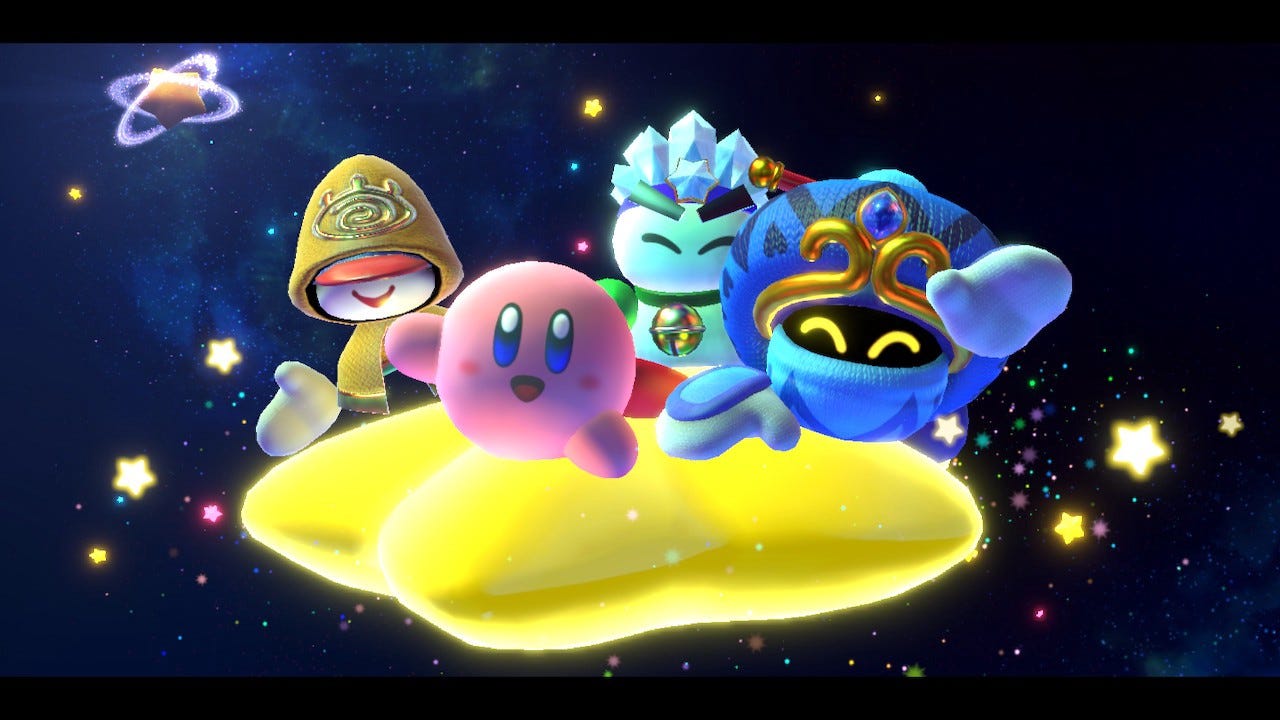
As these four examples show, Nintendo has proven its ability to bring people together, to fix the Internet (if only temporarily), and to help solve some of the critical problems that the online world has created for our society.
The Big N has done it so many times and made it seem so easy each time, that I’m convinced this is all part of some master plan to ultimately save humanity from our most base and repugnant instincts.
And here’s the coolest thing of all: the gaming wizards at Nintendo are just getting started.
In 2019 we will see even more installments from some of our favorite franchises, games that will give rise to even more warm, fuzzy, and passion-fuelled excitement in millions of people’s hearts:
Yoshi, Animal Crossing, Pokémon, and (eventually) Metroid are all on the way, just to name a few of the upcoming releases from Nintendo.
If those games help generate anything close to the sense of community and togetherness that their current titles have inspired, then by the end of 2019 Nintendo will have not only fixed the Internet and saved humanity…
…it will, at the very least, have also shifted civilization into a golden age that is free of war, strife, and oppression.
And if the company REALLY succeeds, it will have led us into such an enlightened state of being that we will have transcended our feeble and limited hominid shells and ascended into a plane of eternal light and life.

You heard it here first.
ADDENDUM: Since this article was first published, Kotaku UK dropped this fascinating piece on Nintendo-focused YouTubers, and found that, lo and behold, the Switch is bringing together a whole swatch of YouTube creators and viewers, creating a space that—to nobody’s surprise—is much more positive than the rest of YouTube.
From the article:
“I’m sure there are exceptions, but it feels like the nature of Nintendo encourages a certain nature in its fans. These channels are all enthusiastic and optimistic [...] At times it feels like Switch has created its own parallel universe — or at the least, a parallel YouTube.”
There you have it. Nintendo managed to make friggin YouTube a clean and wholesome place.
Do you believe me now?
Jay Rooney is a copywriter, communications professor, and lifelong Nintendo fanatic living in the San Francisco Bay Area. All screenshots were captured by him, on his Switch. His favorite Switch game is Breath of the Wild. He mains Ness and Link, and his friend code—should you ever need a sparring partner—is SW-2888–2425–3008.


